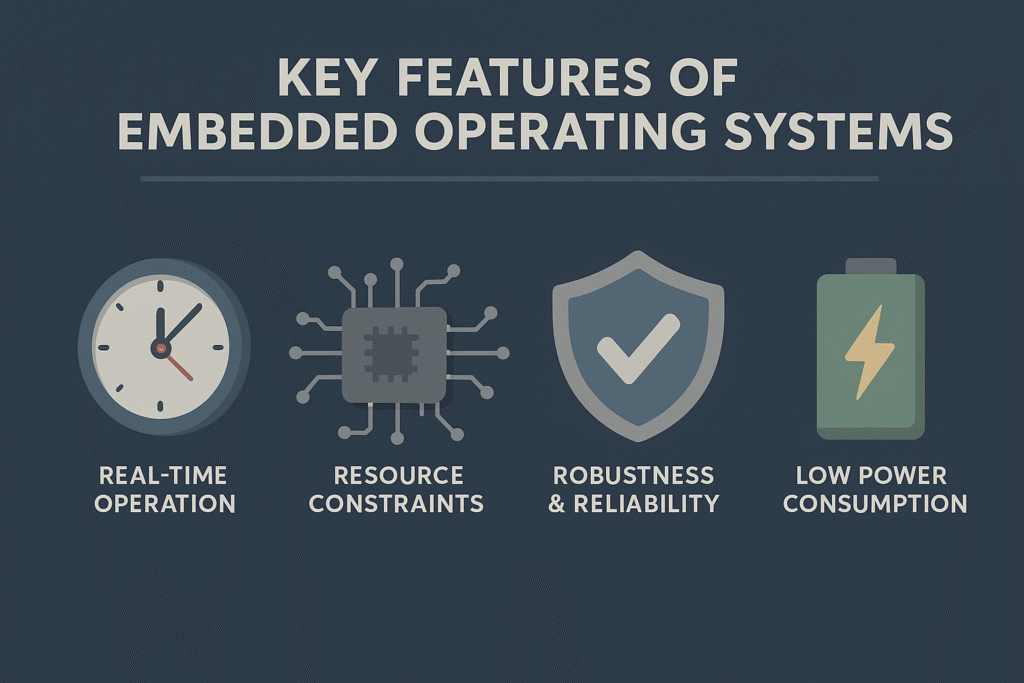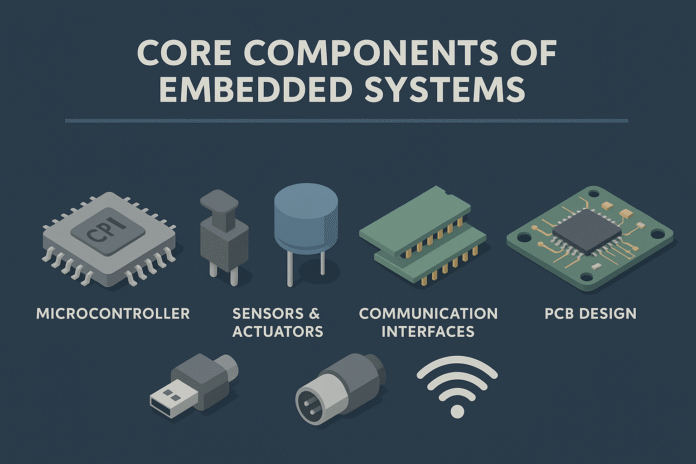Understanding what is embedded programming is essential for engineers, developers, and businesses working in electronics, IoT, and automation. Embedded programming refers to the practice of writing software that directly controls hardware systems, often running on microcontrollers, SoCs (System-on-Chip), or specialized processors inside electronic devices. It enables products from smartphones to pacemakers and industrial robots to function intelligently. A successful embedded project requires not just coding skills but also careful attention to pcb design, hardware selection, and optimization for real-world constraints. This guide explores embedded programming in detail, from its definition and components to its role in modern industries.
Definition and Key Characteristics
Embedded programming is the development of software that runs on embedded systems—computing devices built into larger systems to perform dedicated tasks. Unlike general-purpose computers, embedded systems are optimized for specific functions. Key characteristics include:
- Dedicated functionality: Each system performs a narrow range of tasks.
- Real-time operation: Many systems must respond within strict time limits (e.g., airbags deploying).
- Resource constraints: Limited memory, processing power, and energy.
- Integration with hardware: Direct communication with sensors, actuators, and interfaces.
- Reliability and longevity: Many embedded systems must run for years without failure.
This makes embedded programming a blend of hardware awareness, low-level coding, and performance optimization.
Core Components of Embedded Systems
An embedded system is built on both hardware and software foundations:
Hardware Components
- Microcontrollers (MCUs): Combine CPU, memory, and peripherals on a single chip. Popular families include ARM Cortex-M, STM32, and PIC.
- Microprocessors (MPUs): More powerful than MCUs, used in applications needing advanced OS support (e.g., Raspberry Pi).
- Sensors and actuators: Interface with the environment (temperature sensors, motors, displays).
- Memory: Includes ROM for program storage and RAM for runtime operations.
- Communication interfaces: I2C, SPI, UART, CAN bus, USB, or wireless modules for data exchange.
Software Components
- Firmware: Low-level software burned into ROM or flash memory.
- RTOS (Real-Time Operating System): Provides scheduling, timing, and task management.
- Drivers: Interface software that communicates with hardware peripherals.
- Application logic: The high-level code performing the system’s intended tasks.
Together, these components make up the embedded platform where programming brings hardware to life.
How Embedded Programming Differs from General Software
Embedded programming is unique compared to desktop or cloud programming:
- Hardware awareness: Developers must know how peripherals, buses, and signals interact.
- Real-time constraints: Tasks often run on strict timing requirements where milliseconds matter.
- Low-level coding: While higher-level languages like Python may be used, most embedded code is written in C, C++, or assembly.
- Resource optimization: Code must fit in small memory and run efficiently on limited processors.
- Longevity: Embedded code may run for years without updates, unlike frequently patched desktop software.
- Integration with pcb design: The layout of traces, grounding, and power delivery in PCB design directly influences software performance.
This makes embedded programming a multidisciplinary skill combining electronics, coding, and systems thinking.
Programming Languages Used in Embedded Systems
- C: The dominant language, balancing control and portability.
- C++: Adds abstraction and modularity while retaining performance.
- Assembly: Used for time-critical or resource-limited code.
- Python and MicroPython: Increasingly popular in prototyping and IoT.
- Rust: Emerging for safety-critical embedded systems.
Language choice depends on project requirements, hardware limitations, and developer expertise.
Examples Across Industries
Embedded programming drives nearly every industry today:
Consumer Electronics
Smartphones, smart TVs, cameras, and gaming consoles rely on embedded systems for control, communication, and multimedia processing.
Automotive
- Engine control units (ECUs).
- ADAS systems like lane departure warnings.
- EV battery management systems.
Medical Devices
- Pacemakers and insulin pumps.
- Imaging systems such as MRI and CT scanners.
- Portable diagnostic equipment.
Industrial Automation
- PLCs and motor controllers.
- Robotics systems for manufacturing.
- IoT-enabled sensors in smart factories.
Aerospace and Defense
- Avionics and navigation systems.
- UAV flight controllers.
- Radar and communication equipment.
IoT and Wearables
- Smartwatches, fitness trackers, and AR glasses.
- Home automation hubs and sensors.
- Edge computing devices for data processing.
The versatility of embedded programming makes it indispensable in both everyday and mission-critical systems.
The Role of PCB Design in Embedded Systems
Embedded systems cannot function without strong pcb design practices. Software performance is tied to hardware layout.
- Signal integrity: Ensures reliable communication between microcontroller and peripherals.
- Power distribution: Stable voltage regulators and bypass capacitors are critical for microcontrollers.
- Thermal management: Heat dissipation techniques protect sensitive ICs.
- Component placement: Positioning affects performance, EMI, and testability.
- Design for testability: Including test pads and debugging interfaces aids in firmware development.
A good PCB design accelerates programming and improves long-term reliability.

Development Tools and Debugging
Embedded developers rely on specialized tools:
- IDEs: Keil, IAR, MPLAB X, STM32CubeIDE.
- Compilers and linkers: Convert source code into machine code.
- Programmers/debuggers: JTAG and SWD interfaces allow real-time debugging.
- Simulators: Model hardware behavior before physical testing.
- Oscilloscopes and logic analyzers: Used to analyze signals and validate timing.
Debugging embedded code requires both software and hardware-level verification.
Real-Time Operating Systems (RTOS) in Embedded Programming
RTOS platforms like FreeRTOS, Zephyr, and VxWorks provide deterministic task scheduling. They allow:
- Multitasking: Running multiple processes without delays.
- Priority handling: Critical tasks executed first.
- Resource management: Memory and processor usage are optimized.
RTOS is essential in medical devices, automotive safety, and industrial robotics where timing precision is non-negotiable.
Security in Embedded Programming
As embedded systems become connected, cybersecurity is vital:
- Encryption for communication protocols.
- Secure boot to verify firmware integrity.
- Over-the-air (OTA) updates for IoT devices.
- Tamper detection for medical and financial systems.
Embedded developers must balance security with resource limitations.
Future of Embedded Programming
The future points to smarter, more connected embedded systems:
- AI integration: Embedded ML for predictive analytics and automation.
- Edge computing: Local processing to reduce cloud dependency.
- Low-power design: For wearables and remote IoT devices.
- Open-source ecosystems: Wider adoption of platforms like Zephyr.
- Flexible PCBs and system-on-modules (SoMs): Miniaturization for next-gen designs.
As hardware becomes more capable, embedded programming will expand into new domains while maintaining its focus on reliability and efficiency.
Conclusion
Understanding what is embedded programming is crucial for anyone working in electronics or software development. Embedded programming creates the intelligence that powers everything from household gadgets to medical equipment and aerospace systems. Unlike general-purpose software, embedded code must run reliably under strict constraints and integrate seamlessly with pcb design and hardware components. From microcontrollers to real-time operating systems, every part of the development process influences performance and reliability. As industries evolve, embedded programming will continue to grow in importance, shaping the future of IoT, automation, and advanced computing systems.
